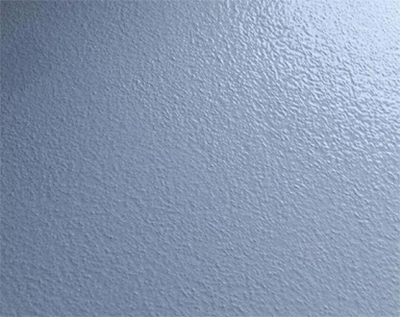Customized Stop-the-Slip Solutions
For Your Unique Conditions
Your Stop-the-Slip Solutions Graded:
Handi-Treads: A-
If you’ve got brick or stone steps that are pitted or starting to crack, Handi-Treads can actually extend the life of the treads. Because Handi-Treads are made from a single piece of aluminum, they act like a splint when attached to brick or stone with lags and screws. Properly installed, Handi-Treads can simultaneously help to stabilize the concrete and improve traction in nearly any weather conditions.
The raised traction buttons of the aluminum treads are uniquely self-cleaning. The pressure from a foot stepping on the rigid raised buttons disperses the layer of water, frost, or snow, creating solid contact between the tread and shoe.
Once installed, no maintenance is required for Handi-Treads aluminum treads, which are guaranteed to last a lifetime in residential conditions. Installation is simple and straightforward, but it’s important to remember that you’ll need to order concrete lags for installation.
If you live in an area where it snows, you’ll find that you can use a snow shovel on your aluminum treads without fear of damaging them. This is not the case with most other solutions.
Because Handi-Treads are a lifetime solution, their initial cost is higher. When calculated over a three to five year performance period however, the investment in Handi-Treads is often the most-cost effective solution.


Total Score: A
Effectiveness: A
Installation & Maintenance: A
Durability: A
Initial Price: C
Long-Term Value: A
Handi-Treads Nosings: A-
If your brick or stone stairs are cracking or broken at the front of the tread, Handi-Treads nosings are the perfect solution. Because Handi-Treads are made from a sturdy, single piece of aluminum, they act like a splint when attached to the concrete.
Handi-Treads nosings come in several widths, including 2.75″, 6″ and 9″. This means you can cover almost a complete brick or stone tread with the nosing, often eliminating the need to do a complete rebuild of the concrete steps.
The raised traction buttons of the aluminum tread are uniquely self-cleaning. The pressure from a foot stepping on the rigid raised buttons disperses the layer of water, frost, or snow, creating solid contact between the tread and shoe.
Once installed, no maintenance is required for Handi-Treads nosings which are guaranteed to last a lifetime in a residential environment. You will need concrete anchors and screws for installation.
If you live in an area where it snows, you’ll find that you can use a snow shovel on your Handi-Treads without fear of damage to the nosings. This is not the case with most other solutions.
Because Handi-Treads nosings are a lifetime solution, their initial cost is higher. When calculated over a three to five year performance period however, the investment in Handi-Treads nosings is often the most-cost effective solution.


Total Score: A-
Effectiveness: A
Installation & Maintenance: A
Durability: A
Initial Price: C
Long-Term Value: A
Rubber or Door Mat Style Treads: C-
Door-mat style and rubber treads are two of the most common solutions to slippery outdoor brick or stone steps, but really aren’t appropriate when the stair lip is deteriorating. Door mat style treads improve grip when wet, but their effectiveness varies based on the material used and the aggressiveness of their texture. They are also less effective with leather-soled shoes.
Both rubber and door-mat style treads are effective in winter weather only if they are kept free of snow. Care must be taken when using a snow shovel with rubber treads, as even a plastic blade can cut the rubber. Deeply grooved rubber treads also catch and hold dirt, requiring them to be hosed down several times a year.
Installation and maintenance of rubber and door-mat style treads can be challenging on outdoor brick or stone stairs that are deteriorating. Some of the manufacturers suggest just placing the “anti-slip” treads on the stairs. We think this is bad idea as the treads might actually become a hazard themselves if you were to catch a toe, or were the treads to move under the heavy pressure of a person starting to slip.
We can only recommend rubber or door-mat style treads if you permanently affix them to your stairs with lags and screws. Both of these types of treads wear down with use. Depending upon thickness and quality of the material you can expect rubber or door mat style treads to last 2 to 3 years when installed on concrete steps that are deteriorating.


Total Score: C-
Effectiveness: C
Installation & Maintenance: D
Durability: D
Initial Price: B
Long-Term Value: C
Grit Paint: F
If your brick or stone steps are deteriorating, grit paint will not be an acceptable solution. For example, if the concrete steps are flaking, the paint will flake off as well, leaving gaps in coverage that wet and winter weather will soon attack.
Similarly, anti-slip paint will do nothing to fix the deterioration of the lips of the steps. If there are irregularities on the lips of the treads that could cause a slip and fall, they will remain after the grip paint is applied.
For these reasons we do not recommend grit paint on brick or stone steps that are in a state of disrepair and decay.




Total Score: F
Effectiveness: F
Installation & Maintenance: N/A
Durability: F
Initial Price: N/A
Long-Term Value: F
